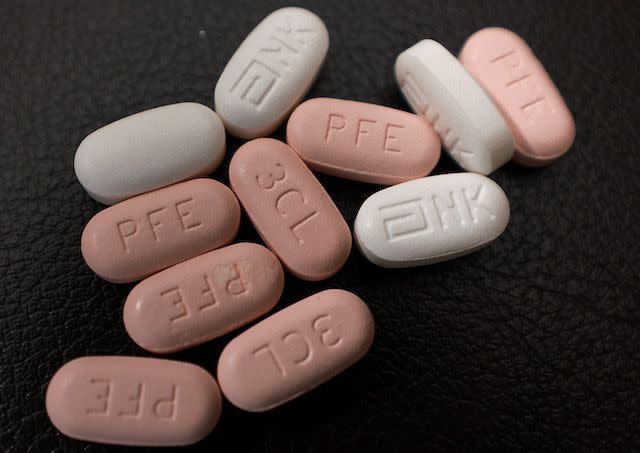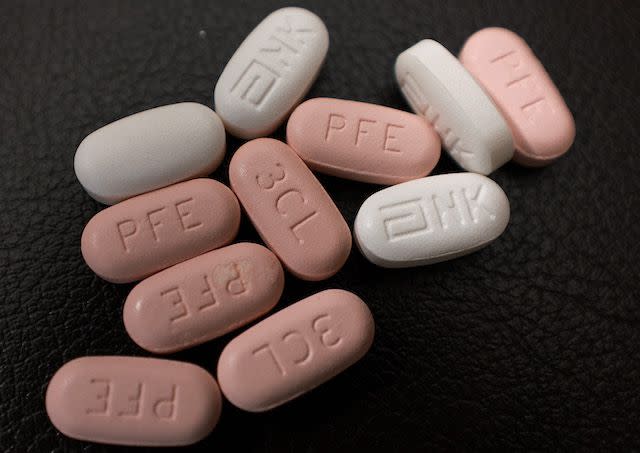How to Obtain Paxlovid

Medically reviewed by Erika Prouty, PharmD
When faced with a diagnosis of COVID-19, caused by the SARS-CoV-2 you may seek an effective pharmaceutical treatment option to relieve your symptoms.
One such option is Paxlovid, an orally administered prescription medicine used to treat COVID-19, a drug used mainly in adults 18 and older, but one that can sometimes be used in adolescents 12-18 years old.
Paxlovid is the first-choice treatment for mild to moderate COVID-19 in people with a higher risk of severe illness.
This article will discuss obtaining Paxlovid and review its efficacy, safety, and potential for drug-related interactions related to the treatment of COVID-19.

What Is Paxlovid?
Paxlovid is a combination of two different antiviral medications, nirmatrelvir and ritonavir, which come as separate pills, are taken together twice daily for five days. These antiviral drugs work to stop the SARS-CoV-2 virus by preventing it from making copies of itself in the body.
Paxlovid was initially granted an Emergency Use Authorization (EUA) by the Food and Drug Administration (FDA), which was first issued on December 22, 2021.
EUAs are administered when the FDA feels there is reasonable evidence that a drug may effectively treat severe or life-threatening diseases, and fast-tracking it would benefit the population before FDA approval is granted.
However, on May 25, 2023, Paxlovid was granted FDA approval in adults at high risk for developing severe, life-threatening COVID-19.
How Do I Obtain Paxlovid?
A positive COVID-19 test is unnecessary for Paxlovid, and pharmacists can prescribe it in some states.
To get Paxlovid from a pharmacist, you do need to provide proof of recent laboratory blood work indicating adequate kidney and liver functioning, as well as a list of current medications, including over-the-counter (OTC) medications.
Adults and children 12 and older, weighing at least 88 pounds, can get a prescription for Paxlovid from many healthcare providers, including physicians, advanced practice registered nurses, and physician's assistants.
These test results can be sent electronically to your pharmacy, or your pharmacist may consult directly with your healthcare provider to establish that it’s safe to prescribe Paxlovid for you.
Your pharmacist will also need a comprehensive list of other medications you take to avoid the risk of drug interactions.
If these conditions aren’t able to be met by you and your pharmacist, you’ll need to contact your healthcare provider for a prescription.
Evolving Criteria
The requirements for obtaining Paxlovid have evolved:
It was not always the case that pharmacists could prescribe Paxlovid, and initially, a positive COVID-19 test was required to get the medication. This led to delays in obtaining treatment. In July 2022, the FDA relaxed both of these requirements.
However, updated liver and kidney functioning tests are still required to receive Paxlovid.
How Well Does Paxlovid Work?
In a randomized control trial published in 2022 to test the effectiveness of Paxlovid, the risk of hospitalization or death related to COVID-19 was reduced by 89% in adults who began taking Paxlovid within three days of their symptoms starting.
Paxlovid should be taken as soon as possible, ideally within five days of the start of symptoms, as in the trial, which treated adults starting on day three.
Ideally, beginning Paxlovid as soon as possible after your symptoms start would be the optimal way to use the medication.
Paxlovid Rebound Effect
Some people taking Paxlovid may experience an improvement in their symptoms at first but then get worse again after finishing the five-day treatment; this is referred to as Paxlovid rebound.
Studies suggest that this is not common. It only affects about 3%-6% of people who take Paxlovid.
If you experience this, contact your healthcare provider for further guidance.
Alternative Uses of Paxlovid
Paxlovid is authorized for people hospitalized for conditions other than COVID-19, provided the terms of the authorization are otherwise satisfied.
This may include types of viruses besides COVID-19 that experts feel could be susceptible to the antivirals in Paxlovid based on clinical judgment and expertise.
Side Effects & Safety
Some possible side effects of Paxlovid include the following:
Dysgeusia (change in or decreased sense of taste)
Hypertension (high blood pressure)
Myalgia (muscle aches)
Liver and kidney problems have also occurred in people taking Paxlovid, especially those with kidney disease or preexisting liver diseases such as abnormal liver function lab results or hepatitis.
This is why your liver and kidney function will be evaluated before you receive a Paxlovid prescription.
Allergic reactions, abdominal pain, nausea, and feeling generally unwell have also been reported after Paxlovid use. These listed side effects are based on limited clinical data, and other products may occur with Paxlovid beyond what is mentioned here.
Potential Interactions
The drug ingredients in Paxlovid, nirmatrelvir/ritonavir, may interact with other common medications. This can lead to serious side effects.
Some drugs that may interact with Paxlovid are:
Statin cholesterol medications, such as Zocor (simvastatin), Crestor (rosuvastatin), or Lipitor (atorvastatin)
Blood thinners such as Xarelto (rivaroxaban) and Jantoven (warfarin)
Certain antiplatelet medications, such as Plavix (clopidogrel)
Alpha-blockers, such as Flomax (tamsulosin)
Erectile dysfunction medications, such as Viagra (sildenafil) or Cialis (tadalafil)
Antipsychotics, such as Latuda (lurasidone), Risperdal (risperidone), or Zyprexa (olanzapine)
Certain antiepileptics (seizure medications), such as Tegretol (carbamazepine)
Anti-arrhythmic drugs, such as Pacerone (amiodarone)
You should provide your healthcare provider with a complete list of all other prescription and over-the-counter (OTC) medicines and herbal supplements you take to enable them to make necessary adjustments.
Alternatives to Paxlovid
Paxlovid isn’t the only drug available to treat COVID-19.
Another medicine, Lagevrio (molnupiravir), was granted EUA status for adults 18 and older.
Regarding efficacy, one study suggests that this drug is less effective than Paxlovid, reducing the risk of hospitalization and death by only 30%.
A few other medications taken orally (by mouth) have been evaluated as treatments for COVID-19, including metformin, ivermectin, and fluvoxamine, but none significantly decreased the risk of hospitalization or death associated with the virus.
Summary
Paxlovid is an oral medication granted EUA by the FDA for adults and children 12 years and older at high risk for severe disease and hospitalization due to COVID-19.
The drug effectively reduces the risk of hospitalization and death if it is started within five days of developing symptoms.
You may be able to get Paxlovid from your local pharmacy without seeing your healthcare provider first, provided you have recent blood work and health records, including a complete medication list.
Notably, these requirements are due to potential liver and kidney damage that Paxlovid may cause and a significant list of drug interactions between Paxlovid and other commonly taken medications.
Frequently Asked Questions
How should I store Paxlovid?
Paxlovid comes as two different medications, nirmatrelvir, and ritonavir, in separate pockets on the same blister card. Keep the medicine in this blister card throughout the five-day treatment to ensure the two drugs are clear.
Store it at room temperature (between 68 and 77 degrees F). You can take Paxlovid with or without food. Swallow the tablets whole and do not cut, crush or chew them.
Are Tamiflu and Paxlovid similar?
Tamiflu and Paxlovid are similar in that they are both prescription-only antiviral drugs given early in illnesses to control a virus.
Tamiflu, which must be started within 48 hours of the first sign of symptoms, reduces flu symptoms and shortens the length of illness from the flu. Paxlovid reduces the amount of SARS-CoV-2 virus in the body and prevents hospitalization and death in people with COVID-19.

